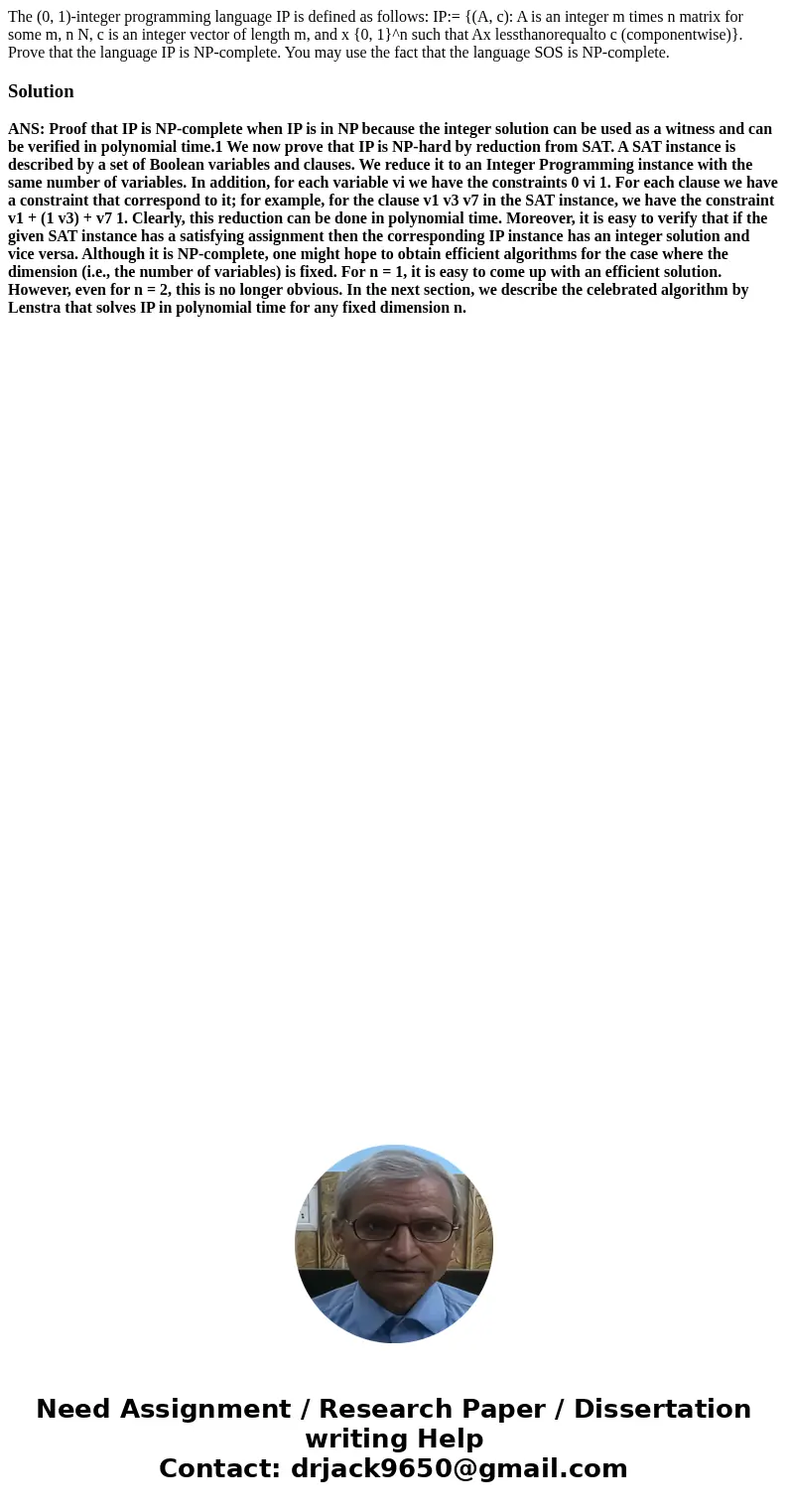The 0 1integer programming language IP is defined as follows
Solution
ANS: Proof that IP is NP-complete when IP is in NP because the integer solution can be used as a witness and can be verified in polynomial time.1 We now prove that IP is NP-hard by reduction from SAT. A SAT instance is described by a set of Boolean variables and clauses. We reduce it to an Integer Programming instance with the same number of variables. In addition, for each variable vi we have the constraints 0 vi 1. For each clause we have a constraint that correspond to it; for example, for the clause v1 v3 v7 in the SAT instance, we have the constraint v1 + (1 v3) + v7 1. Clearly, this reduction can be done in polynomial time. Moreover, it is easy to verify that if the given SAT instance has a satisfying assignment then the corresponding IP instance has an integer solution and vice versa. Although it is NP-complete, one might hope to obtain efficient algorithms for the case where the dimension (i.e., the number of variables) is fixed. For n = 1, it is easy to come up with an efficient solution. However, even for n = 2, this is no longer obvious. In the next section, we describe the celebrated algorithm by Lenstra that solves IP in polynomial time for any fixed dimension n.

 Homework Sourse
Homework Sourse